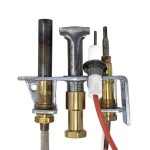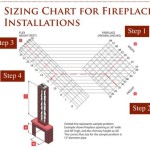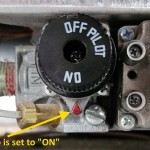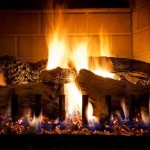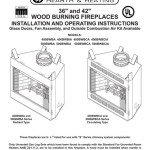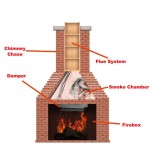Fireplace Gas Logs Installation: A Comprehensive Guide
Fireplace gas logs offer a convenient and aesthetically pleasing alternative to traditional wood-burning fireplaces. They provide the ambiance of a real fire without the mess, hassle, and environmental concerns associated with burning wood. This article provides a comprehensive guide to understanding the process of fireplace gas log installation, covering essential considerations, steps involved, and safety precautions.
The decision to install gas logs in a fireplace involves several factors. Individuals might consider the convenience of starting and stopping a fire with the flick of a switch, coupled with the reduced maintenance compared to wood-burning fireplaces. Gas logs eliminate the need to chop, stack, and store wood, as well as clean up ashes. Furthermore, gas logs can be a more efficient heating source, providing consistent and controlled warmth. However, it is crucial to understand the installation process and ensure it is performed correctly to guarantee safety and optimal performance.
While DIY installation might seem appealing, it's generally recommended to hire a qualified professional for gas log installation. Gas appliances can be dangerous if not installed properly, leading to gas leaks, carbon monoxide poisoning, or even explosions. A certified technician has the necessary training, experience, and tools to ensure the installation meets safety standards and local codes. The cost of professional installation is a worthwhile investment in safety and peace of mind.
Determining Compatibility and Requirements
Before proceeding with gas log installation, it is imperative to assess the fireplace itself and determine its compatibility with gas logs. Several factors need to be considered:
Fireplace Type: The fireplace must be designed for gas logs. Existing wood-burning fireplaces can often be converted, but it's essential to verify that the fireplace is structurally sound and has the necessary clearances. The fireplace's firebox should be made of fire-resistant materials like firebrick.
Gas Line Availability: A gas line, either natural gas or propane, must be accessible to the fireplace. If a gas line is not already present, one will need to be installed by a qualified plumber or gas fitter. This involves running a gas pipe from the main gas line to the fireplace location, which can be a significant undertaking depending on the distance and layout of the property.
Ventilation: Gas logs require proper ventilation to prevent the buildup of carbon monoxide. There are two main types of gas log systems: vented and ventless. Vented gas logs must be installed in a fully functional fireplace with a working chimney. The damper must be fully open when the logs are burning to allow exhaust gases to escape. Ventless gas logs, also known as vent-free gas logs, do not require a chimney and are designed to burn more efficiently, producing minimal carbon monoxide. However, ventless gas logs are subject to stricter regulations and may not be permitted in all jurisdictions. It's crucial to check local building codes and regulations before installing ventless gas logs.
Firebox Dimensions: The size of the firebox is critical for selecting the appropriate size of gas logs. The logs should fit comfortably within the firebox without touching the sides or the top. Consult the gas log manufacturer's specifications for recommended firebox dimensions for each specific log set.
Gas Pressure and BTU Rating: The gas pressure and BTU (British Thermal Unit) rating of the gas line and the gas log set must be compatible. Ensure that the gas line provides sufficient gas pressure for the gas logs to operate correctly. The BTU rating of the gas logs should be appropriate for the size of the fireplace to avoid overheating or inefficient burning.
The Installation Process: A Step-by-Step Overview
The installation process for fireplace gas logs typically involves the following steps:
Preparation: Before starting the installation, gather all necessary tools and materials. This includes the gas log set, gas connector kit, pipe sealant, leak detector solution, wrench, screwdriver, and safety glasses. If converting from a wood-burning fireplace, thoroughly clean the firebox and remove any ash or debris. Ensure the gas supply to the fireplace is shut off and the area is well-ventilated.
Installing the Gas Line Connection: Connect the gas line to the fireplace gas valve using the gas connector kit. Apply pipe sealant to the threads of the gas fittings to ensure a gas-tight seal. Follow the manufacturer's instructions carefully for connecting the gas line. Double-check all connections to ensure they are secure.
Installing the Burner Assembly: The burner assembly is the heart of the gas log system. Carefully place the burner assembly in the firebox according to the manufacturer's instructions. The burner should be positioned so that the gas flames will be directed properly. Ensure the burner is level and stable.
Arranging the Gas Logs: This is often the most visually appealing part of the installation. The gas logs should be arranged on the burner assembly according to the manufacturer's instructions. Pay close attention to the log placement to ensure the flames are distributed evenly and the logs look natural. Avoid blocking the burner ports with the logs. Refer to the included diagram for the specific log arrangement.
Connecting the Gas Control Valve: Connect the gas control valve to the gas line and the burner assembly. The gas control valve regulates the flow of gas to the burner. Ensure all connections are tight and leak-free.
Leak Testing: After all connections are made, perform a leak test to ensure there are no gas leaks. Apply leak detector solution to all gas fittings and connections. If bubbles appear, there is a gas leak. Tighten the connections or re-seal the fittings as needed until the leak is resolved. Never use an open flame to check for gas leaks.
Testing the System: Once the gas line is confirmed to be leak-free, turn on the gas supply to the fireplace. Follow the manufacturer's instructions to light the gas logs. Observe the flame pattern and ensure the logs are burning correctly. Adjust the gas control valve as needed to achieve the desired flame height and heat output.
Safety Precautions and Important Considerations
Safety should be the top priority when installing and using fireplace gas logs. Adhering to the following safety precautions can help prevent accidents and ensure safe operation:
Carbon Monoxide Detectors: Install carbon monoxide detectors in the vicinity of the fireplace. Carbon monoxide is a colorless, odorless gas that can be deadly. Regular maintenance and battery replacement of carbon monoxide detectors are essential.
Professional Inspection: Have the gas log installation inspected by a qualified professional to ensure it meets safety standards and local codes. Regular maintenance and inspection of the gas log system are also recommended to identify and address any potential problems.
Proper Ventilation: Ensure proper ventilation when using vented gas logs. The fireplace damper must be fully open to allow exhaust gases to escape. Never block or obstruct the chimney. For ventless gas logs, follow the manufacturer's instructions for ventilation requirements.
Keep Flammable Materials Away: Keep flammable materials, such as curtains, furniture, and paper, away from the fireplace. Maintain a safe distance between the fireplace and combustible materials.
Supervision: Never leave a gas fireplace unattended while it is burning. Turn off the gas logs when leaving the room or going to bed.
Regular Cleaning: Clean the gas logs and burner assembly regularly to remove dust and debris. This will help ensure proper burning and prevent carbon monoxide buildup. Follow the manufacturer's instructions for cleaning the gas logs.
Gas Log Set Maintenance: Periodically inspect the gas logs for cracks or damage. Replace any damaged logs to prevent gas leaks.
Gas log installation requires careful planning, attention to detail, and adherence to safety guidelines. By understanding the requirements, following the installation process, and taking necessary safety precautions, individuals can enjoy the benefits of a gas fireplace while minimizing the risks. Even with a detailed guide, consulting with a qualified professional is advisable to ensure safe and efficient installation and operation.
In summary, fireplace gas logs represent a convenient and aesthetically pleasing alternative to traditional wood-burning fireplaces. The installation process involves assessing compatibility, installing the gas line and burner assembly, arranging the logs, and performing leak tests. Safety precautions, including carbon monoxide detection, proper ventilation, and regular maintenance, are paramount for safe operation.

How To Select And Install A Gas Fireplace Log Set Fireplaces Direct Learning Center

How To Select And Install A Gas Fireplace Log Set Fireplaces Direct Learning Center

How To Put In A Gas Log Set For Fireplace

Can I Install Gas Logs In My Existing Fireplace Thomas Bros Propane

Vented Gas Logs Heater Or Decorative Bart Fireside

Gas Fireplace Services Houston Tx Lords Chimney

How To Put In A Gas Log Set For Fireplace

Napoleon Gvfl24 Ventless Gas Log Set 24 Inch

Gas Log Setup Installation Service Pros On Call

How To Install A Log Lighter Fireplace Gas Starter Pipe
Related Posts

